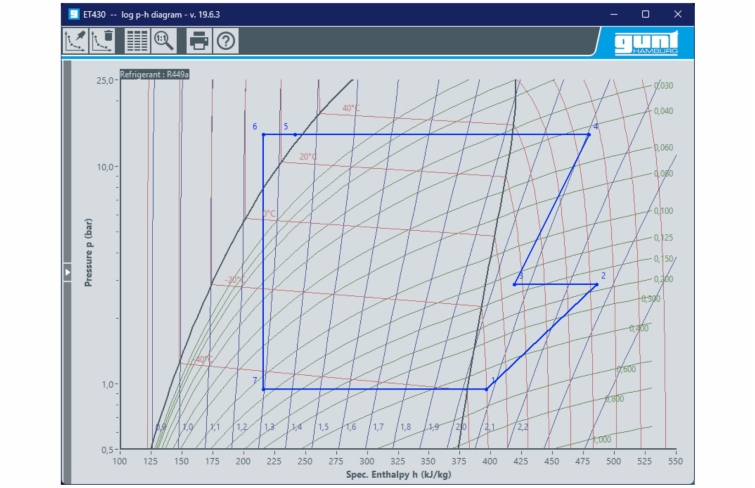Refrigeration systems with two-stage compression are used for the generation of particularly low temperatures. At very low temperatures large pressure differences are required between the evaporator and condenser. In a compressor the volumetric efficiency drops significantly at high pressure ratios.
Therefore, two compressors are connected in series, with each compressor only having a relatively low pressure ratio. This makes a more favourable dimensioning of the low pressure stage compressor possible. Due to the large specific volume it requires a larger capacity at lower drive power.
In addition, intercooling between the low pressure compressor (LP) and the high pressure compressor (HP) reduces the outlet temperature of the HP compressor to harmless values and improves the efficiency of the compression.
The trainer ET 430 uses injection intercooling. A small amount of liquid refrigerant is injected from the receiver into the outlet line of the LP compressor. The liquid refrigerant evaporates and thus cools the intake gas for the HP compressor. Via an add-on heat exchanger in the injection cooler the supercooling of the liquid refrigerant can be increased upstream of the expansion valve. This allows for an increase in the evaporator capacity.
Valves allow for the injection intercooling or the heat exchanger for refrigerant supercooling to be switched off. This can demonstrate their effect on the system.
All relevant measured values are recorded by sensors and displayed. The simultaneous transmission of the measurements to the GUNT software enables analysis and the representation of the process in the log p-h diagram in real time. Additionally, two flow meters indicate the total volumetric flow rate and the volumetric flow rate in the intercooling.



















